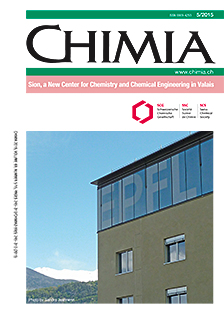Analytical Chemistry at the Laboratoire d'Electrochimie Physique et Analytique
DOI:
https://doi.org/10.2533/chimia.2015.290Keywords:
Analytical chemistry, Electrostatic spray ionization mass spectrometry, Immunoaffinity capillary electrophoresis, Scanning electrochemical microscopyAbstract
The Laboratoire d'Electrochimie Physique et Analytique (LEPA) has moved to the new Energypolis campus in Sion. This laboratory is involved in energy research in particular by studying charge transfer reactions at soft interfaces and developing interfacial redox electrocatalysis, by pioneering the concept of photo-ionic cells and by integrating redox flow batteries for the production of hydrogen at the pilot scale. Nonetheless, this laboratory has a long tradition in analytical chemistry with the development of microfabrication techniques such as laser photo-ablation, screen-printing and more recently inkjet printing for the design and fabrication of biosensors and immunosensors. As shown in the present review, the laboratory has recently pioneered new technologies for electrochemical and mass spectrometry imaging and for the screening of allergy in patients. The role of the laboratory in the Valais landscape will be to foster the collaboration with the HES to develop teaching and research in analytical chemistry as this field is a major source of employment for chemists.Downloads
Published
2015-05-27
Issue
Section
Scientific Articles
License
Copyright (c) 2015 Swiss Chemical Society

This work is licensed under a Creative Commons Attribution-NonCommercial 4.0 International License.
How to Cite
[1]
A. Bondarenko, F. Cortés-Salazar, N. Gasilova, A. Lesch, L. Qiao, H. H. Girault, Chimia 2015, 69, 290, DOI: 10.2533/chimia.2015.290.







